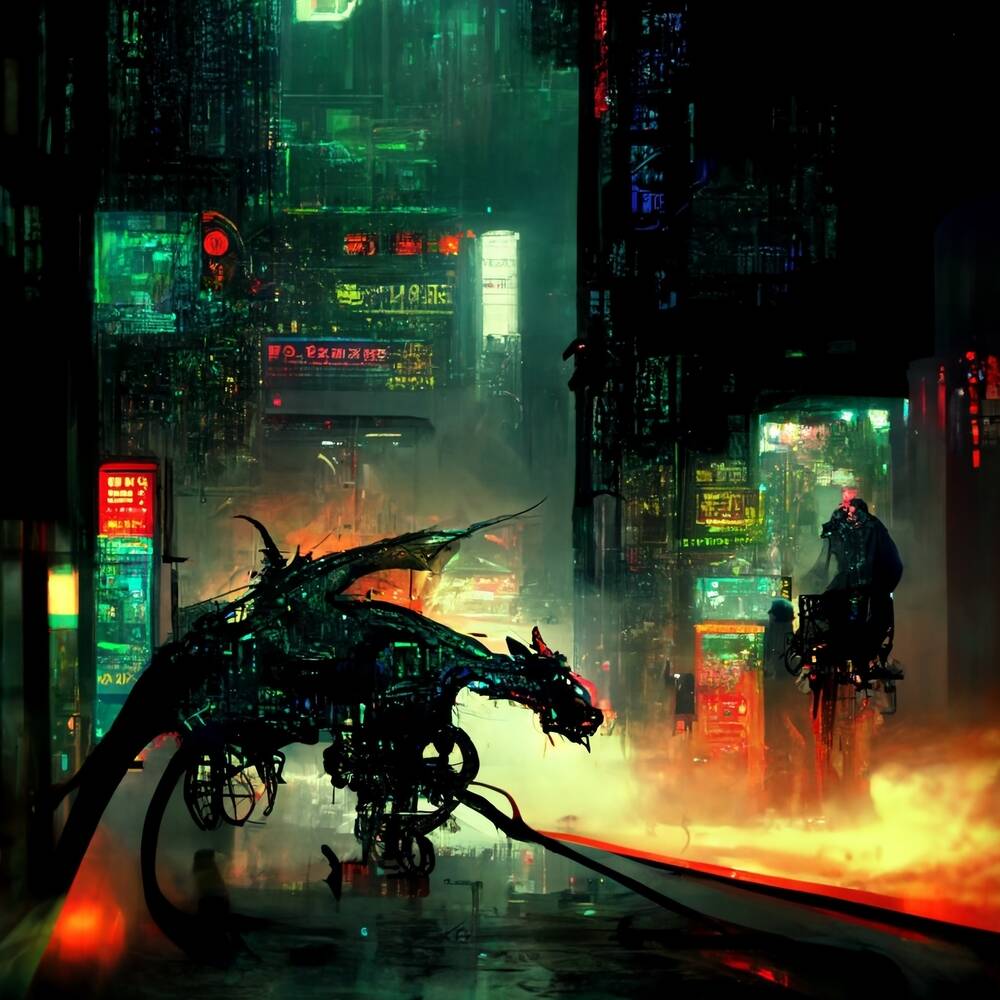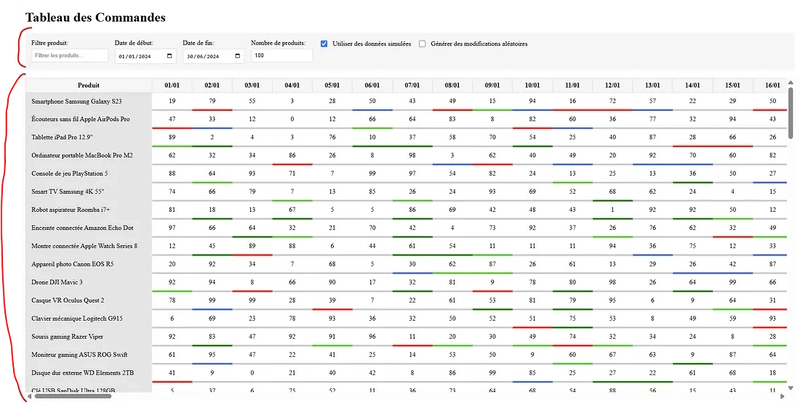TV's Next Revolution
From the earliest days of TV commercials, brands cast wide nets. They broadcast broad messages into millions of homes, hoping something would stick—that, somehow, their ads would resonate among the faceless masses. But those days are fading fast. Today, television adverts are no longer one-size-fits-all. Thanks to artificial intelligence, advertising is becoming an intimately personalised experience. Imagine an advertisement crafted just for you—attuned to your taste, your needs, your moments. This is no longer an aspiration: it's a technological reality reshaping our relationship with television itself. AI at Home in Your Living Room This AI-powered movement isn't merely theoretical; it has already taken roots in our living rooms. Pioneers in the streaming industry, like Netflix, use AI-driven algorithms that personalise trailers and promotions based on viewing histories, presenting you with exactly what grabs your interest. Meanwhile, companies like LG Ad Solutions have also begun reshaping how brands engage audiences, taking things several steps further. Through AI approaches that consider weather, geography, and even domestic demographics, they serve ads uniquely relevant to each household. Picture this: sun cream promotions spike during sunny weekends, while raincoat sales surge in storm-swept regions—a sophisticated dance of AI insights guiding consumer action. Hulu and Amazon have joined the game, employing dynamic ad insertion that analyses viewing patterns to deliver nuanced, emotionally resonant experiences, each advertisement carefully placed and perfectly timed. Perfecting Context and Timing More than just personalisation, AI-driven advertising has gained the ability to read context deeply. AI isn't just aware of who we are—it's conscious of where we are, what we're experiencing, and even what we feel in the moment. Consider an electric car brand: by leveraging AI-driven broadcasting platforms, they can seamlessly integrate ads within environmental documentaries, aligning their message to their audience's deepest concerns. A winter apparel company, meanwhile, dynamically inserts cosy clothing adverts into programming during sudden snowstorms—a delightful synchronicity of sensitivity and timeliness. The potent blend of television's broad reach and digital marketing precision is rewriting how we experience advertising: relevant, unobtrusive, and intimately aware of us as viewers. Creativity Enhanced, Not Replaced Amid this technological leap forward, the human role remains central. AI is not here to eclipse creativity but to enhance and amplify it—to open new channels for emotional storytelling powered by real-time data. Notable campaigns, like Toys "R" Us's holiday operation in 2022, prove the potency of this fusion. AI tools such as GPT-4, Waymark, and Runway enriched creative workflows, resulting in adverts that connected deeply with diverse audiences without sacrificing human craftsmanship. Industry giants like Coca-Cola and Nike leverage dynamic video creation, multilingual synthetic voices, and adaptive audio overlays, delivering globally resonant content. Instead of dampening humanity in creative work, AI expands possibilities—allowing creative teams the freedom to tailor, iterate, and captivate at unprecedented scale and speed. Recognising You, Understanding Your Emotions Powering this intensely personal advertising experience is Automatic Content Recognition (ACR)—embedded in modern smart TVs—allowing brands insight into exactly what draws our attention. Advertisements don’t just speak to audiences; they now listen and respond. Take LG's recent collaboration with Zenapse: through real-time emotional analysis, the adverts dynamically adjust in response to viewers' heartfelt reactions. Content is no longer static—it evolves, intuitively mirroring the emotional landscapes of those watching. Here, though, ethical challenges arise. While the science of emotional AI presents enormous creative and business potential, the principles of consumer consent, data security, and safeguarding against subliminal influence become essential requirements—not optional extras—to ensure trust and transparency. Ethical Imperatives in an AI-Enhanced World The unprecedented intimacy that AI brings to advertising warrants equal measures of responsibility. Transparency about data collection, explicit consent for emotional tracking, and strict adherence to guidelines form the backbone for ethical AI deployment. The Interactive Advertising Bureau (IAB), along with industry leaders, underscores transparency and accountability, urging companies to craft clear opt-ins, data-use statements, and robust privacy protections. Done right, this approach maintains viewer trust while harnessing AI’s powerful capabilities. Moreover, the industry must grapple seriously with subconscious manipulation challenges. Emotional AI might subtly nudge viewers toward cert

From the earliest days of TV commercials, brands cast wide nets. They broadcast broad messages into millions of homes, hoping something would stick—that, somehow, their ads would resonate among the faceless masses. But those days are fading fast.
Today, television adverts are no longer one-size-fits-all. Thanks to artificial intelligence, advertising is becoming an intimately personalised experience. Imagine an advertisement crafted just for you—attuned to your taste, your needs, your moments. This is no longer an aspiration: it's a technological reality reshaping our relationship with television itself.
AI at Home in Your Living Room
This AI-powered movement isn't merely theoretical; it has already taken roots in our living rooms. Pioneers in the streaming industry, like Netflix, use AI-driven algorithms that personalise trailers and promotions based on viewing histories, presenting you with exactly what grabs your interest.
Meanwhile, companies like LG Ad Solutions have also begun reshaping how brands engage audiences, taking things several steps further. Through AI approaches that consider weather, geography, and even domestic demographics, they serve ads uniquely relevant to each household. Picture this: sun cream promotions spike during sunny weekends, while raincoat sales surge in storm-swept regions—a sophisticated dance of AI insights guiding consumer action.
Hulu and Amazon have joined the game, employing dynamic ad insertion that analyses viewing patterns to deliver nuanced, emotionally resonant experiences, each advertisement carefully placed and perfectly timed.
Perfecting Context and Timing
More than just personalisation, AI-driven advertising has gained the ability to read context deeply. AI isn't just aware of who we are—it's conscious of where we are, what we're experiencing, and even what we feel in the moment.
Consider an electric car brand: by leveraging AI-driven broadcasting platforms, they can seamlessly integrate ads within environmental documentaries, aligning their message to their audience's deepest concerns. A winter apparel company, meanwhile, dynamically inserts cosy clothing adverts into programming during sudden snowstorms—a delightful synchronicity of sensitivity and timeliness.
The potent blend of television's broad reach and digital marketing precision is rewriting how we experience advertising: relevant, unobtrusive, and intimately aware of us as viewers.
Creativity Enhanced, Not Replaced
Amid this technological leap forward, the human role remains central. AI is not here to eclipse creativity but to enhance and amplify it—to open new channels for emotional storytelling powered by real-time data.
Notable campaigns, like Toys "R" Us's holiday operation in 2022, prove the potency of this fusion. AI tools such as GPT-4, Waymark, and Runway enriched creative workflows, resulting in adverts that connected deeply with diverse audiences without sacrificing human craftsmanship.
Industry giants like Coca-Cola and Nike leverage dynamic video creation, multilingual synthetic voices, and adaptive audio overlays, delivering globally resonant content. Instead of dampening humanity in creative work, AI expands possibilities—allowing creative teams the freedom to tailor, iterate, and captivate at unprecedented scale and speed.
Recognising You, Understanding Your Emotions
Powering this intensely personal advertising experience is Automatic Content Recognition (ACR)—embedded in modern smart TVs—allowing brands insight into exactly what draws our attention. Advertisements don’t just speak to audiences; they now listen and respond.
Take LG's recent collaboration with Zenapse: through real-time emotional analysis, the adverts dynamically adjust in response to viewers' heartfelt reactions. Content is no longer static—it evolves, intuitively mirroring the emotional landscapes of those watching.
Here, though, ethical challenges arise. While the science of emotional AI presents enormous creative and business potential, the principles of consumer consent, data security, and safeguarding against subliminal influence become essential requirements—not optional extras—to ensure trust and transparency.
Ethical Imperatives in an AI-Enhanced World
The unprecedented intimacy that AI brings to advertising warrants equal measures of responsibility. Transparency about data collection, explicit consent for emotional tracking, and strict adherence to guidelines form the backbone for ethical AI deployment.
The Interactive Advertising Bureau (IAB), along with industry leaders, underscores transparency and accountability, urging companies to craft clear opt-ins, data-use statements, and robust privacy protections. Done right, this approach maintains viewer trust while harnessing AI’s powerful capabilities.
Moreover, the industry must grapple seriously with subconscious manipulation challenges. Emotional AI might subtly nudge viewers toward certain choices, crossing ethical lines if left unchecked. Upholding fact-based, transparent ad practices and regular ethical audits can help brands safely traverse this tightrope.
Striking the Right Chord
Fully embracing AI's promise involves more than just deploying clever algorithms. It requires the delicate blend of human creativity and technological insight:
Data-driven narratives : Deep AI insights inform storytelling approaches, aligning campaigns with genuine consumer interests.
Human-led creativity : AI tools inform—but never replace—human artistry and sensitivity.
Transparency at every touchpoint : Brands openly articulate AI's role, maintaining trust through honesty and clarity.
Continuous feedback and refinement : Human judgment oversees AI-generated outputs, refining strategies and ensuring ethical alignment.
Investment in education : Teams empowered by AI literacy craft confident, meaningful ads without fear of technological complexity.
This synergy between human insight and AI precision elevates advertising—maintaining emotional resonance while deepening audience engagement.
Mindfully Stepping into the AI-Infused Future
As we move further into this exciting landscape, balancing innovation with responsibility becomes paramount. AI-powered personalisation is the future of advertising—but only ethically rigorous, creatively inspired campaigns will ensure its success.
Brands must carefully harness AI’s considerable power, nurturing audience trust without sacrificing emotional authenticity. Advertisers hold the key to this delicate balance, guiding AI with mindful strategy, human-centred storytelling, and an unwavering ethical compass.
In this refined harmony between insightful technology and human empathy lies the true revolution—an evolution that respects the audience, delights the viewer, and reshapes television advertising for years to come.
Publishing History
- URL: https://rawveg.substack.com/p/tvs-next-revolution
- Date: 19th April 2025















![[DEALS] The 2025 Ultimate GenAI Masterclass Bundle (87% off) & Other Deals Up To 98% Off – Offers End Soon!](https://www.javacodegeeks.com/wp-content/uploads/2012/12/jcg-logo.jpg)
























![Air Traffic Controller Claps Back At United CEO Scott Kirby: ‘You’re The Problem At Newark’ [Roundup]](https://viewfromthewing.com/wp-content/uploads/2025/05/scott-kirby-on-stage.jpg?#)

































